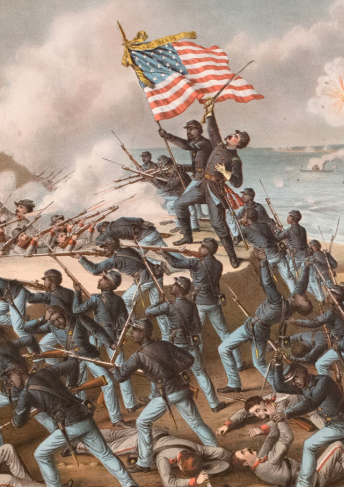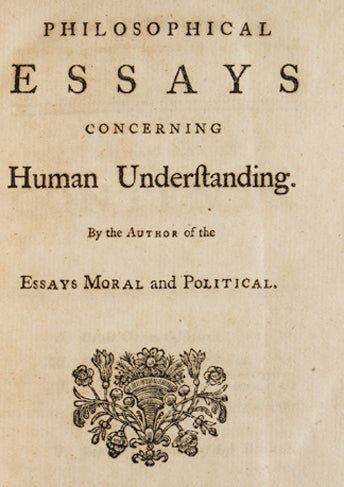‘Ringmaster of Society in the Eternal City’
Lights Out [Memoirs: Princess di San Faustino].
The Lido, Venice: June 1930.
Price: $2,500.00
About the item
Typescript, printed rectos only. 289 pp. (with a few additional leaves). Some pencil editorial queries and corrections especially in latter portion of the text. 1 vols. 4to. ‘Ringmaster of Society in the Eternal City’. Contemporary italian binding in quarter brown mottled calf and marbled boards. Some toning to paper stock. Cf. Beatty, Jerome. Neither Rich, nor Beautiful, The North American Review 246:1 (Autumn 1938), pp. 162-169.
Item #326903
The generally candid and richly entertaining autobiography of Princess Jane di San Faustino (1863-1938), recounting her origins in New Jersey and her entry in the highest ranks of the Italian aristocracy following her marriage to Carlo di Bourbon del Monte, prince of San Faustino, in 1897. Born Jane Allen Campbell in Montclair, New Jersey, in 1863, she first travelled to Rome in 1886, and then after the death of her father in 1895, she returned to Rome to visit her aunt Jane, who had married a Dutch diplomat, the Count de Westenberg.
The autobiography is arranged in eight sections: My Early Life in America; My First Visit to Rome, 1886; 1895 to 1899; 1899 to 1911; 1911 to 1917; From 1919 to the present day; Rome of Today; Venice.
In tracing the many incidents of a long life, Princess Jane’s autobiography is a who's who of cosmopolitan visitors to prewar Rome and the world of the 1920s. The anecdotes feature a cast including European royalty and members of Italian princely and noble families, and a parade of American and British ambassadors, and countless visitors, among them Mr. and Mrs. Osgood Field, Maud (“Emerald”) Cunard, Lord Berners, Reggie Lister, Lady Ripon, the Duchess of Marlborough, “Nancy Leeds, afterwards Princess Christopher of Greece”, and many more. One long time friend was Dr. Axel Munthe, who opened her eyes to the suffering of poor children in Rome.
She writes, “I met my husband at a reception at the Palazzo Barberini in 1897. I found him very good-looking and belonging to a type which I could not understand: taciturn, I should say, and perhaps sad. He intrigued me enormously.” She calls him Charles throughout. The marriage was tempestuous at times. He died in 1917. “It was that morning that I learned what a daughter’s love could be. Virginia shielded me from curious eyes. […] I remember I had no hat and she took a black scarf she was wearing and put it over my head. I have never discarded that black veil.”
Princess Jane began to work on behalf of the Red Cross and raised funds for a tuberculosis treatment center. Her efforts were boosted by the attendance of Mussolini after an aide told him “Sir, all the pretty women in Rome are selling at a bazaar at Princess Jane’s.” She writes, “The story of my colonia, if properly written, would be a proof of generosity in the world” (164-5).
Her candor is at times quite direct: “Women woke up sexually during the war and they have never gone to sleep since. Perhaps it was the horror and bloodshed and also the liberty they had with men in boats, camps and hospitals. It awakened sex even in women who had never thought about it, and they have never let it die down since.” At other times, Princess Janes is rather arch. Writing of the daughters of Mrs. Deacon, “Edith married Mr. Grey and is one of the leading young women in New York society. Still another is perhaps the most beautiful. She married first Prince Abba Rodziwill, and then Count Palffy. Everywhere she ges she leaves a wake of broken hearts and disaster; there is no one indifferent to her charm.”
Occasionally there are conscious omissions, such as when she writes of her friend Hilmi Bey, a Turkish diplomat, “Through him I met . . . who wrote . . . telling of his spiritual experiences.” The dedication leaf reads: This book is dedicated to the friends I have not mentioned. The autobiography is dated June 1930, and she notes, “I started to write these memoirs for money, but even if I do not make much, I am glad to have done it.” Some portion of her reminiscences was serialized in an Italian weekly shortly before Princess Jane died of pneumonia in 1938. A contemporary obituary noted her long tenure as “ringmaster of society in the Eternal City”, and her considerable charity. “When Princess Jane spoke, it was like firecrackers exploding” (Beatty).
Jane’s daughter Virginia married Edoardo Agnelli, son of the founder of Fiat, and had six children; her eldest son was Gianni Agnelli (1921-2003), legendary industrialist and playboy.
A FASCINATING ACCOUNT OF A REMARKABLE LIFE.

![Lights Out [Memoirs: Princess di San Faustino]](https://jamescumminsbookseller.cdn.bibliopolis.com/pictures/326903.jpg?width=768&height=1000&fit=bounds&auto=webp&v=1664479283)
![Lights Out [Memoirs: Princess di San Faustino]](https://jamescumminsbookseller.cdn.bibliopolis.com/pictures/326903_2.jpg?width=768&height=1000&fit=bounds&auto=webp&v=1664479086)
![Lights Out [Memoirs: Princess di San Faustino]](https://jamescumminsbookseller.cdn.bibliopolis.com/pictures/326903_3.jpg?width=768&height=1000&fit=bounds&auto=webp&v=1664479162)


